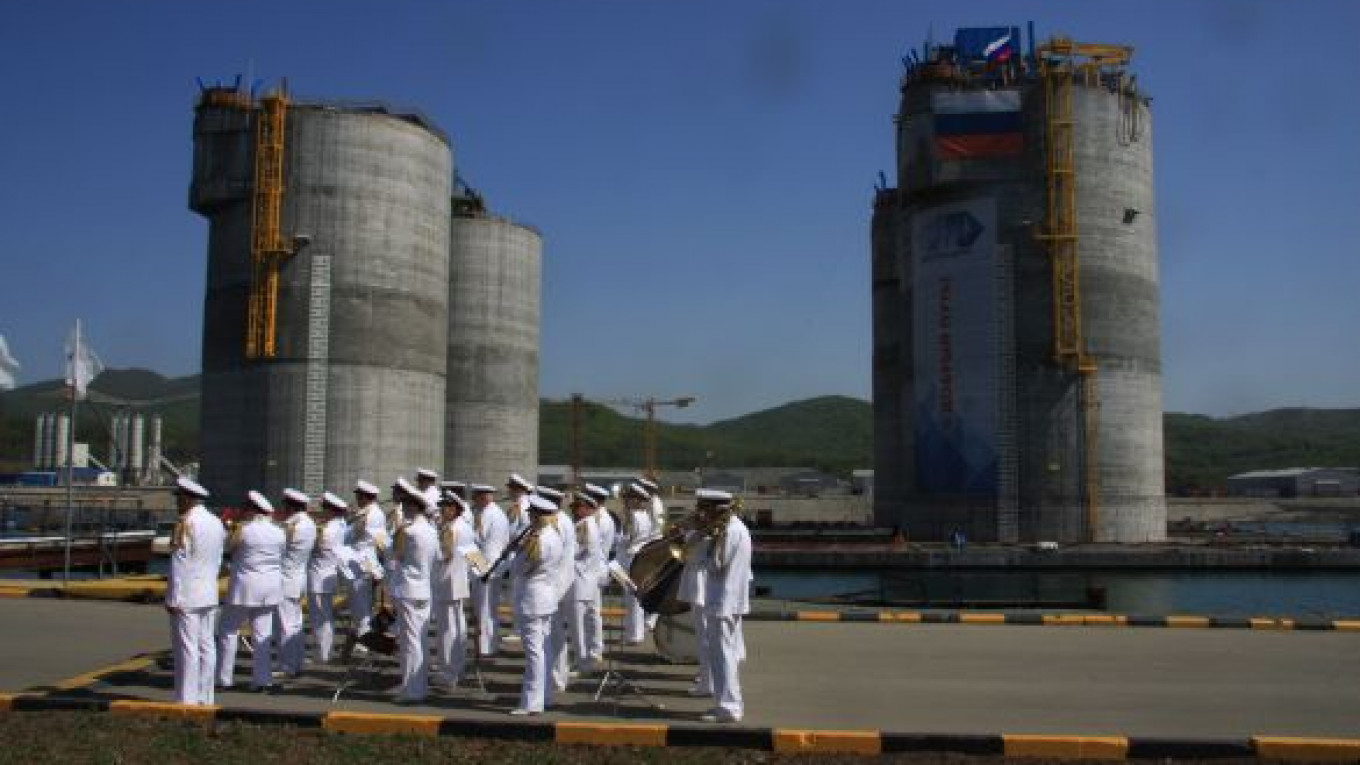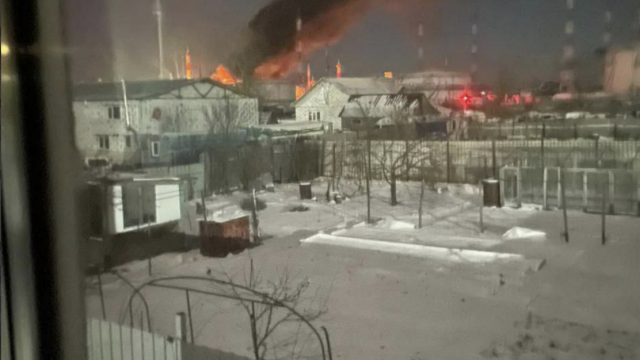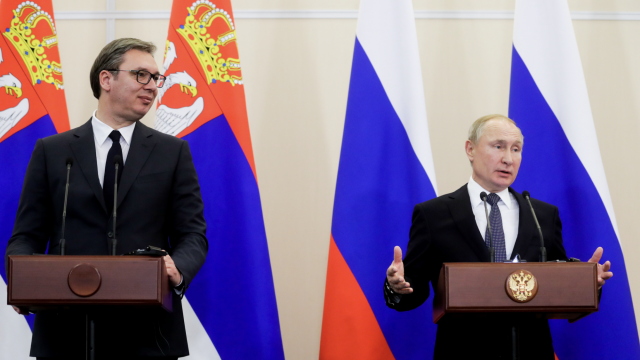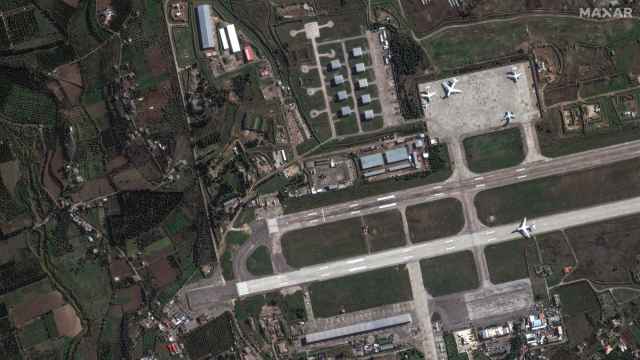VOSTOCHNY PORT, Primorye Region — The bottom half of what will be Russia’s biggest ice-resistant drilling platform looked like a gigantic upside-down table.
The 52,000 cubic meters of concrete and 27,000 tons of steel mark the beginning of the third phase of the Sakhalin-1 project operated by ExxonMobil, which anticipates peak annual oil production of 4.5 million tons by 2017.
For the U.S. oil major, the enormous Berkut platform is also a potential template for its lucrative exploration agreement signed last year with state-owned Rosneft to tap about 36 billion barrels of crude in Russia’s Arctic waters.
“The strategic global alliance with Rosneft is looking at exploration, development and production in different parts of the world, including the Kara Sea,” Glenn Waller, head of ExxonMobil in Russia, told reporters Friday outside Nakhodka, in the country’s Far East. “So, when I look at this platform … [I think that] it’s just the first, and there will be dozens of such platforms.”
The huge structure was officially presented in a ribbon-cutting ceremony last week for guests including local politicians, executives and the U.S. consul general in Vladivostok, Sylvia Curran.
The engineering and procurement contract was awarded in 2008 to Kverner, a Norwegian oil and gas construction company that has built similar concrete platforms in Norway, Spain, Canada and Australia. Bjorn Gundersen, a vice president at the company, described Berkut as a “mastodon.”
In the coming days it will be towed 1,800 kilometers to the installation point, the Arkutun-Dagi oil field in the Sea of Okhotsk, 25 kilometers off Sakhalin Island. Arkutun-Dagi will be the third field to come online under the Sakhalin-1 rubric, after Chayvo and Odoptu.
Drilling from Berkut is expected to begin in 2014. It has the capacity to produce 90,000 barrels of oil a day, which will then be pumped to Sakhalin-1’s nearby onshore facility at Chayvo. After processing, it will be transferred by undersea pipeline to the De-Kastri oil terminal on the Russian mainland, a hub for hydrocarbon sales to the Asian market.
Berkut will be the third drilling platform operated by Sakhalin-1. The offshore Orlan platform commenced drilling in 2006, while the land-based Yastreb rig last year set the world record for longest bore hole, 12,345 meters.
A consortium runs Sakhalin-1. Exxon Mobil and Japan’s Sakhalin Oil and Gas Development, or SODECO, have 30 percent each, India’s ONGC Videsh holds 20 percent, and the remaining 20 percent is controlled by Rosneft-affiliated companies.
It has not always been plain sailing for the multinational project, which has seen public disagreements between ExxonMobil and the local administration. Sakhalin Governor Alexander Khoroshavin played a key role in disrupting the U.S. oil major’s investment plans in 2010.
“He abuses us sometimes, but we love him and he does really support us,” ExxonMobil’s Waller said of Khoroshavin on Friday.
But both ExxonMobil executives and local officials were keen to emphasize the Russian input into Berkut’s construction for guests and invited reporters last week.
Of the 44 companies employed on the project, 37 were based in the Far East, said Alexander Levintal, deputy presidential envoy to the Far Eastern Federal District. And perhaps even the poorly translated safety signs at the dockside construction site were meant to signify the dominant Russian presence.
The emphasis, however, was slightly disingenuous. Most of the high-level management roles and particularly sophisticated technical tasks were not sourced locally.
In addition to ExxonMobil’s oversight role and the contract awarded to Oslo-based Kverner, the upper part of the platform is being built in Korea. It will be shipped to the drilling site by special barge next year.
And while two small concrete factories were built alongside the dry dock to supply the construction of Berkut, reinforced German concrete had to be imported for the parts of the rig most vulnerable to ice.
The platform, which is to be installed at a water depth of 33 meters, is built to resist magnitude-9.0 earthquakes and 18-meter-high waves, said Bill Hillner, ExxonMobil’s construction site manager.
The design of the Berkut was not altered after the Kolskaya drilling platform sank last year while under tow in the Sea of Okhotsk during a winter storm at the cost of 53 lives, executives said.
The conditions for towing the Berkut are completely different, and there will be no men on board, they added.
Buoyancy for the 160,000-ton structure is provided by a 12-meter-deep space in the base below the platform’s legs, where the air content can be regulated remotely to “sink” Berkut once it reaches the drilling site.
The legs themselves are hollow and contain piping, through which the extracted oil will flow. The rig’s expected service life is 50 years.
A spokesman for ExxonMobil declined to reveal the cost of the platform, citing “commercial secrets.”
Gravity based structures, or GBS, like Berkut, are fixed concrete rigs that sit on the sea floor, usually at average depths of about 100 meters.
For offshore drilling in deeper waters, oil companies must build floating oil platforms. The taller the platform, the larger it has to be to ensure its stability.
With an average depth of 128 meters, the Kara Sea, where ExxonMobil and Rosneft have agreed to explore and produce oil, could be a site for both concrete and floating rigs.
“[Berkut has] proven that Russia is the place to build GBS for the Arctic and sub-Arctic regions,” said Roger Hayam, vice president at ExxonMobil, during a speech at the opening ceremony, where guests also enjoyed music from two local brass bands.
A Message from The Moscow Times:
Dear readers,
We are facing unprecedented challenges. Russia's Prosecutor General's Office has designated The Moscow Times as an "undesirable" organization, criminalizing our work and putting our staff at risk of prosecution. This follows our earlier unjust labeling as a "foreign agent."
These actions are direct attempts to silence independent journalism in Russia. The authorities claim our work "discredits the decisions of the Russian leadership." We see things differently: we strive to provide accurate, unbiased reporting on Russia.
We, the journalists of The Moscow Times, refuse to be silenced. But to continue our work, we need your help.
Your support, no matter how small, makes a world of difference. If you can, please support us monthly starting from just $2. It's quick to set up, and every contribution makes a significant impact.
By supporting The Moscow Times, you're defending open, independent journalism in the face of repression. Thank you for standing with us.
Remind me later.







